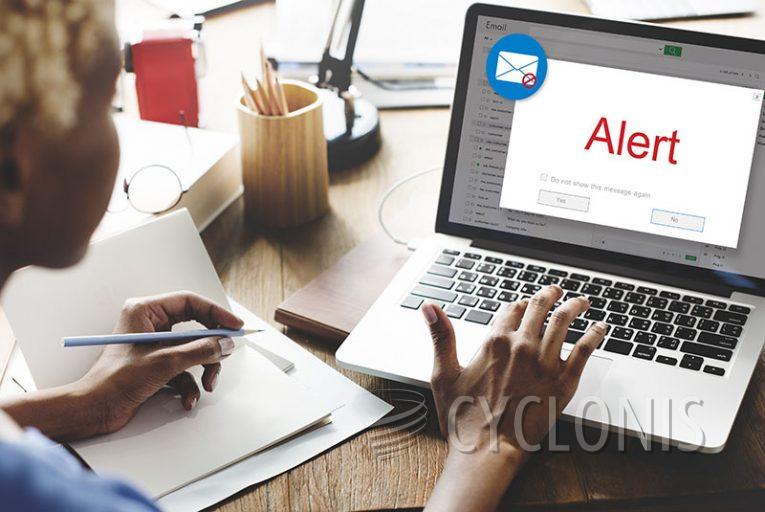How to Avoid the "Computer Is At Risk Of Virus Infection" Pop-up Scam

Table of Contents
What Is the “Computer Is At Risk of Virus Infection” Scam?
The "Computer Is At Risk Of Virus Infection" pop-up scam is a deceptive tactic used by scammers to make users think their computers are infected. This message often appears on suspicious websites and uses fake security alerts to manipulate users into clicking on specific links or purchasing software. The messages are crafted to look urgent, leading visitors to believe immediate action is necessary to safeguard their systems.
Scare Tactics Behind These Messages
The creators of these pop-ups use alarming phrases, like "Your computer is at risk!" to push visitors into action, usually involving clicking a button or link. For example, the fake pop-up might mimic a legitimate security alert, claiming the user has accessed a high-risk site. Once the visitor clicks on "Run a scan," the fake process shows fabricated threats, furthering the illusion of risk.
Here's what the fake message has to say:
McAfee
SAFETY SYSTEM
Your computer is at risk of virus infection virus infection!
You have visited an unsafe site with illegal content!
Run a virus scan for safe operation!
RUN A TEST
Take note that this fake security pop-up may look like it comes from McAfee, but this security software developer is not associated with the scam whatsoever.
The Phony Virus Scan Routine
When users interact with these pop-ups, they often start a mock scanning process, showing exaggerated or completely fake infection alerts. Once this fake scan completes, the message claims that multiple threats have been found and recommends a specific course of action, like purchasing a security subscription. In this case, the scam often suggests subscribing to antivirus software, exploiting the user's concern for their system's safety to prompt unnecessary purchases.
How the Scam Makes Money for Affiliates
A key goal of this scam is to earn money through affiliate commissions. Scammers design these pop-ups to direct users to real antivirus products through an affiliate link. When users purchase software from these pages, a portion of the sale goes to the affiliate—often the scam's creator. Although the promoted security software may be legitimate, the tactic of using fake alerts for profit is deceptive and manipulative.
Recognizing Fake Security Alerts
Scams like the "Computer Is At Risk of Virus Infection" pop-up typically appear on low-quality sites and can mimic legitimate antivirus alerts, using the names of well-known security companies to gain user trust. These messages often mimic system notifications but have small inconsistencies, like odd formatting, unprofessional language, or exaggerated threats. Examples include messages such as "Microsoft Windows Locked Due To Unusual Activity" or "WARNING: Antivirus Protection EXPIRED!" which also aim to create an unnecessary sense of urgency.
How Users Encounter These Scams
Users might end up on scam pages through several channels, including suspicious emails, social media messages with fraudulent links, and pop-ups on untrustworthy sites. Ads on certain platforms, especially torrent sites, free streaming websites, and adult sites, can also redirect users to these pop-ups. In some cases, adware on a user's device may be responsible for frequent redirects to scam pages, continuously exposing them to fake security warnings.
Common Red Flags of Scam Websites
A major red flag with scams like the "Computer Is At Risk of Virus Infection" pop-up is their sudden appearance when visiting certain websites. Users may notice that the messages try to prevent them from closing the window or make continuous, repetitive warnings to create a sense of urgency. Additionally, such messages may push users toward a quick decision, often with large buttons to "Run a Scan" or "Protect Your Computer Now," which serve as hooks for potential purchases.
Ways to Avoid the “Computer Is At Risk of Virus Infection” Pop-up Scam
To protect against pop-up scams, it's best to be cautious when browsing and downloading online content. Avoid opening suspicious emails from unknown senders, as these might contain links that lead to scam sites. If you see a pop-up like this on a webpage, try not to interact with it; instead, close the page immediately. Also, be wary of any website that requests notification permissions, as these could enable similar scams to appear more frequently.
Enhancing Your Online Security
To minimize exposure to pop-up scams, always use trusted sources for downloads and software updates. Reliable security software can add a layer of protection, though it's essential to install it from the provider's official site rather than through third-party links. Regularly update your browser and operating system, as security patches often protect against vulnerabilities that such scams exploit. By staying vigilant, you can avoid these misleading schemes and browse with confidence.
Hence, while the "Computer Is At Risk of Virus Infection" pop-up scam may look alarming, recognizing it for what it is can help you stay safe online. Knowing the tactics scammers use allows you to protect yourself from unnecessary worry and needless purchases.








